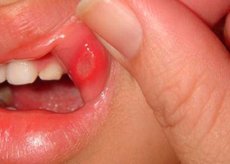Medical expert of the article
New publications
Scurvy
Last reviewed: 05.07.2025

All iLive content is medically reviewed or fact checked to ensure as much factual accuracy as possible.
We have strict sourcing guidelines and only link to reputable media sites, academic research institutions and, whenever possible, medically peer reviewed studies. Note that the numbers in parentheses ([1], [2], etc.) are clickable links to these studies.
If you feel that any of our content is inaccurate, out-of-date, or otherwise questionable, please select it and press Ctrl + Enter.

Nowadays, a disease such as scurvy is quite rare, except in countries where people live below the poverty line. Scurvy is a disease associated with a severe deficiency of vitamin C in humans, which leads to a disorder in the production of collagen and to negative changes in the structure of connective tissue.
ICD 10 code
- E 00 – E 90 – endocrine diseases, nutritional and metabolic disorders.
- E 50 – E 64 – other types of nutritional deficiencies.
- E 54 – vitamin C deficiency.
Causes of scurvy
The disease appears with an acute deficiency of ascorbic acid in tissues. The pathogenesis of scurvy can be characterized in stages:
- the body stops receiving vitamin C, and its deficiency occurs;
- the production of the fibrillar protein collagen, which is necessary for the normal structure of connective tissue, is disrupted;
- connective tissue elements are present in all organs, but the circulatory system is primarily affected;
- The vessels become fragile, vulnerable, and easily permeable.
As a result of the above changes, the first signs of scurvy appear:
- gums become loose and bleed;
- teeth begin to loosen and fall out;
- small hemorrhages (hematomas) appear on the skin.
It is generally accepted that there are no mass cases of scurvy nowadays. However, in some northern regions and in third world countries, rare cases of this disease occur. Therefore, it is important to know the causes in order to resist the development of the disease.
Symptoms of scurvy
The first signs most often make themselves known approximately 2 months after the onset of vitamin deficiency in a person.
The patient feels constantly weak, tired, and is bothered by dizziness and headaches. Relatives notice that the person has become capricious and lethargic. The patient himself may complain of sudden pain in the joints and muscles.
The listed symptoms are not yet typical for scurvy, but these signs can already raise suspicion that something is wrong with the body. If, against the background of the above symptoms, the patient had periods of starvation, poor nutrition or diseases of the digestive tract, then one can think about hypo- or avitaminosis.
The further expansion of the clinical picture is more characteristic of scurvy:
- pathological anemic pallor of the skin;
- bluish mucous membranes;
- bleeding from the gums;
- change in the shape of the gums, swelling;
- pain when biting teeth;
- increased salivation;
- in advanced cases – tooth loss.
Mostly, hemorrhages of various sizes appear on the legs in the calf area, like hematomas. Less often, they can be found on the arms or other parts of the body. As the disease progresses, bleeding may occur in the digestive system, kidneys, bronchi, etc.
In the later stages of scurvy, ulcers may form at the site of hemorrhages.
Almost always, patients experience anemia, sudden weight loss, and deterioration of the skin condition.
Consequences and complications of scurvy
If you do not start treating scurvy in time, a secondary infection may occur. This is manifested by ulcers in the gum area, an unpleasant odor from the oral cavity. Teeth become loose and eventually begin to fall out.

Scurvy patients can be recognized by their appearance: bumpy skin with numerous hematomas of varying degrees of maturity, edema. Such people have difficulty walking, as hemorrhages can also occur in joints and muscle tissue. Extensive joint bleeding often leads to suppuration - in such situations, surgical treatment may be prescribed.
Scurvy can last from several weeks to several years, alternately acquiring a mild or severe course. Sometimes an aggressive form of the disease develops, in which the symptoms appear very sharply and clearly: such a course of the disease is called "lightning".
In advanced cases, a fatal outcome is possible – from general exhaustion, from hemorrhages in the heart and brain, from multiple ulcers, etc.
If the disease is detected and treated in a timely manner, the prognosis for scurvy can be considered favorable.
Diagnosis of scurvy
Scurvy is diagnosed mainly by the characteristic clinical signs of the disease. Most doctors can make the correct diagnosis during the patient's interview and examination. The doctor will definitely clarify the sick person's diet: what, how and when he eats, in what quantities, etc. When examining the patient, it is important to pay attention to his skin and mucous membranes.
In early and latent forms of scurvy, tests are done to determine the degree of saturation of the body with ascorbic acid and other vitamins. Such an analysis is carried out using vacuum testing of capillary resistance. A vacuum is created over a certain area of the skin, after which the number of hemorrhages that have formed is calculated. The more capillaries are damaged, the less vitamin C is in the body tissues.
Instrumental diagnostics can only be used when complications develop, for example, with extensive bleeding into the stomach, kidneys, joints, etc.
Differential diagnostics are performed with hemorrhagic diathesis. For this, a blood test is prescribed for the level of platelets, and the blood coagulation system is also assessed.
Who to contact?
Treatment of scurvy
Treatment of scurvy involves the administration of the only most effective medicine – ascorbic acid. The vitamin is given orally or intravenously, 250 mg 4 times a day. In addition, a full diet is prescribed, enriched with natural sources of vitamin C – these are vegetables, berries, greens, fruits, freshly squeezed juices.
In case of inflammation in the oral cavity, rinsing with hydrogen peroxide is recommended, as well as lubricating the mucous membrane with an oil solution of vitamins A and E.
In case of anemia, the course of treatment can be supplemented with iron-containing drugs and cyanocobalamin.
The diet for scurvy should include a large amount of plant foods, including root vegetables, citrus fruits, kiwi, greens, berries, and dried fruits. Fruits and vegetables should be consumed primarily raw or with a minimum period of heat treatment.
Traditional treatment of scurvy is not only herbal treatment, but also many useful nutritional recommendations:
- you need to consume as much fresh cow's milk as possible;
- in the spring it is useful to include natural birch sap in your diet;
- For mouth ulcers, black radish juice has a good effect; rinse your mouth with it up to 4 times a day;
- After eating, it is recommended to drink fresh carrot or potato juice;
- It is good to rinse your mouth with a warm infusion of oak bark after eating (5 g of bark per 250 ml of boiling water);
- It is useful to chew at least one clove of garlic daily;
- if your gums are sore, you can treat the mucous membrane with sea buckthorn oil up to 3 times a day;
- During the day, drink herbal teas based on rose hips, currants, plantain, and dandelion.
Homeopathy can also be used to treat scurvy, however, taking ascorbic acid and revising your diet is already an effective means of accelerating the recovery process. Therefore, before buying another jar of the drug, consult with your doctor whether it is necessary.
Prevention of scurvy
Prevention consists of daily sufficient consumption of ascorbic acid. For adults, the daily dosage can be from 50 to 120 mg, and for children - from 30 to 75 mg. During the off-season, the issue of prevention should be given special attention.
It is worth saying that ascorbic acid is not produced in the human body, so the required amount of vitamin must come from food. Schoolchildren and students, workers of mental and heavy physical labor especially need large doses of vitamin C.
With frequent alcohol consumption and smoking, vitamin C entering the digestive tract is destroyed and is not absorbed by the body, therefore, in order to prevent vitamin deficiency, it is recommended to give up bad habits.
Fortunately, scurvy is a rare disease these days. However, no one is immune from vitamin deficiency. Therefore, it is necessary to pay close attention to your diet and lifestyle, avoid long fasts and exhausting diets, because all this has a negative impact on your overall health.


 [
[